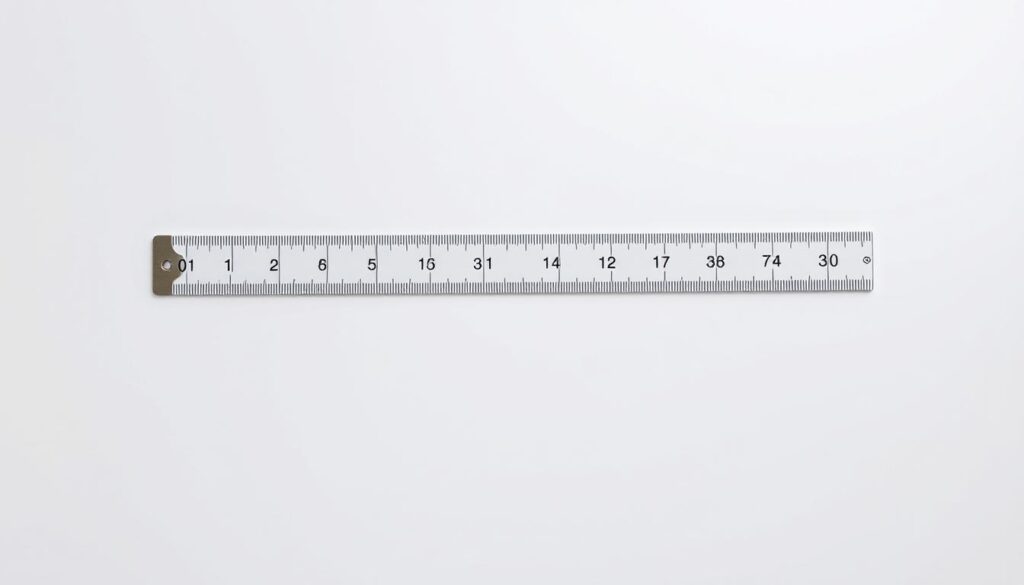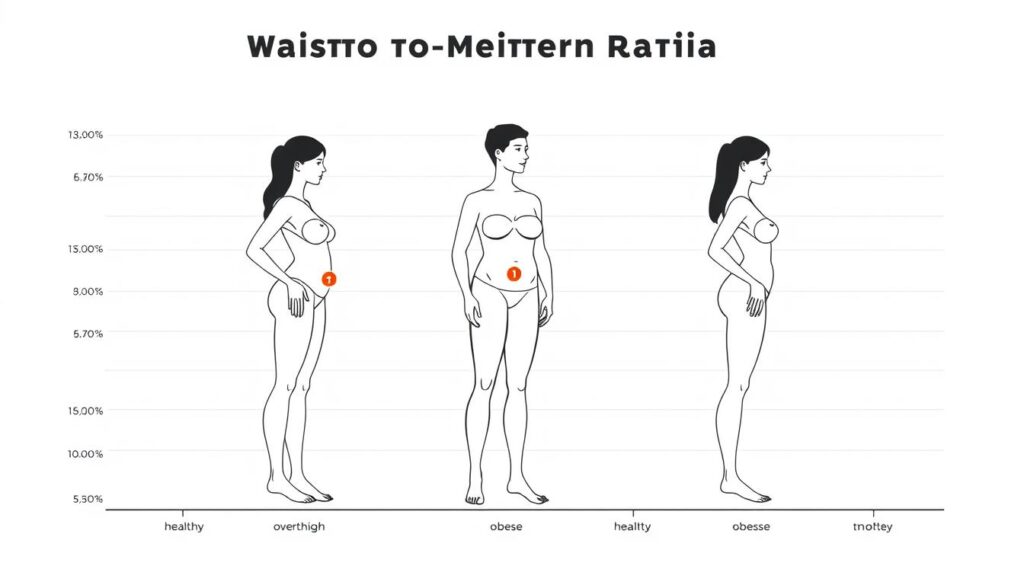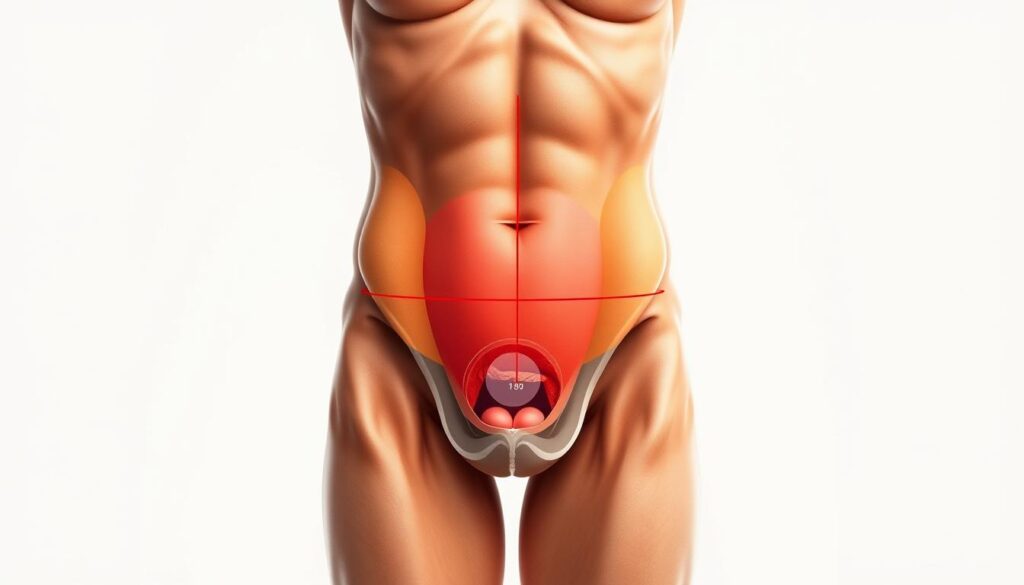Do you know the dangers of having too much fat around your waist, even if you’re not overweight? The waist-to-height ratio (W/Ht) is a key indicator of health risks. This is true, even in big cities like Tokyo.
The World Health Organization (WHO) says a normal BMI doesn’t always mean you’re safe from health problems. A study on PubMed found W/Ht is a good way to check for fat around the waist. It’s simple and works well to spot people at risk.
We’ll look into why W/Ht is important for health, focusing on Tokyo’s health scene.
Key Takeaways
- Waist-to-height ratio is a simple and effective measure for assessing health risks.
- It helps identify central fat distribution, a key factor in metabolic risks.
- A significant portion of individuals with normal BMI may still have high W/Ht, indicating potential health risks.
- W/Ht is used as a boundary value for both men and women, simplifying its application.
- Understanding W/Ht can contribute to better health and wellness strategies in Tokyo.
What is the Waist-to-Height Ratio?
The waist-to-height ratio is a simple way to check health risks linked to belly fat. It’s found by dividing your waist size by your height.
This ratio is useful because it’s easy to understand and shows health risks quickly. Studies show it’s better at predicting heart disease risks than BMI, even in kids.
Definition and Significance
The waist-to-height ratio is the waist size divided by height, both in the same units. For example, if your waist is 80 cm and you’re 160 cm tall, your ratio is 0.5. This ratio is important because it links well with belly fat, which is a risk for diseases like diabetes and heart disease.
Research shows a ratio of 0.5 or higher means higher health risks. This number is used in studies to spot people at risk of metabolic syndrome and heart disease.

How It Differs from Other Measurements
Unlike BMI, which uses weight and height, the waist-to-height ratio focuses on waist and height. This makes it a direct measure of belly fat, a big risk for many diseases.
For instance, two people with the same BMI can have different waist-to-height ratios, showing different health risks. This makes the waist-to-height ratio a great tool for health checks. It helps doctors spot risks and suggest the right actions.
To find your waist-to-height ratio, measure your waist at the narrowest point between your lower rib and hip. Then, divide that by your height. This simple step can give you important health insights.
The Waist-to-Height Ratio in Tokyo’s Population
The waist-to-height ratio is key in checking health risks in Tokyo. It shows how important it is for public health.
Current Statistics and Trends
Studies show the waist-to-height ratio is great for checking heart disease risks in Japanese people. For example, it’s better than other ways to measure health risks in Japanese kids.
Comparisons with Global Data
Looking at Tokyo’s data with the world’s, we see some trends. The table below shows waist-to-height ratios in different groups.
| Population | Average Waist-to-Height Ratio | Prevalence of Health Risks |
|---|---|---|
| Tokyo | 0.48 | Moderate |
| Global Average | 0.50 | High |
| Other Urban Centers | 0.49 | Moderate to High |
The table shows Tokyo’s waist-to-height ratio is a bit lower than the world’s average. This means Tokyo might have a slightly better health profile.
A health expert said, “The waist-to-height ratio is a simple yet effective tool for initial health screenings. It gives a quick look at a person’s risk level.”
“Using the waist-to-height ratio, healthcare providers can spot at-risk people early. This lets them act quickly.”

By looking at Tokyo’s waist-to-height ratio and comparing it to the world’s, we learn a lot. We see health trends and risks tied to this metric. Our study shows how crucial it is to look at specific data for health risk assessments.
Health Implications of Waist-to-Height Ratio
Using the waist-to-height ratio to check health risks is very helpful. It shows if you might get chronic conditions. This simple tool helps figure out heart disease risks.
This ratio is great because it links closely with visceral fat. Visceral fat is bad for many diseases. So, knowing your waist-to-height ratio helps you understand your health. It also helps you take steps to stay healthy.
Risk of Chronic Diseases
Studies show a high waist-to-height ratio means more risk of chronic diseases. These include:
- Cardiovascular disease: This includes high blood pressure and high cholesterol.
- Type 2 diabetes: Too much visceral fat can lead to insulin resistance, a sign of diabetes.
- Certain cancers: Too much visceral fat increases the risk of some cancers.
By watching your waist-to-height ratio, you can spot health risks early. Then, you can make lifestyle changes to lower those risks.

Importance for Different Age Groups
The waist-to-height ratio matters at different ages. For example:
- Children and adolescents: It helps find obesity and health problems early.
- Adults: It’s a key sign of heart disease risk and overall health.
- Older adults: Keeping a healthy waist-to-height ratio helps avoid age-related diseases.
Knowing the benefits of waist-to-height ratio helps people of all ages. It guides them to make better health choices.
In short, the waist-to-height ratio is a key tool for health checks. Its importance for health assessment is huge. It should be a main part of health checks.
Methodology for Calculating Your Waist-to-Height Ratio
Learning how to measure your waist-to-height ratio is key. This simple metric can tell you a lot about your health risks. We’ll show you how to do it right, so you can get accurate results.
Step-by-Step Guide
To figure out your waist-to-height ratio, you need to measure your waist and height. Here’s how:
- Measure your waist at the narrowest point, just above the belly button.
- Measure your height without shoes.
- Use a flexible tape for your waist and a stadiometer or ruler against a wall for height.
After getting these numbers, divide your waist by your height. For example, if your waist is 80 cm and height is 180 cm, your ratio is 0.44.
Getting accurate measurements is very important. Consistency is key. Always measure your waist at the same spot.
Tools and Resources for Accurate Measurement
Having the right tools is crucial for precise measurements. You’ll need a flexible tape for your waist and a stadiometer or ruler for height. For digital options, there are many waist-to-height ratio calculators online.
Talking to a healthcare professional can also help. They can guide you on measuring your waist-to-height ratio and what it means for your health.
Future Directions and Research in Waist-to-Height Ratio
Research keeps showing how important waist-to-height ratio is for health. New studies are looking into this, focusing on Tokyo’s people. This ratio is a key tool for spotting health risks.
New Insights from Emerging Studies
Studies are looking at waist-to-height ratio in different groups, including Tokyo’s people. They want to know more about how it can help predict health problems. This could lead to better health for everyone in the city.
Improving Health Outcomes in Tokyo
Knowing about waist-to-height ratio helps doctors and leaders in Tokyo make better plans. They can work on getting people to live healthier lives. This could lower the chance of serious diseases.
As we learn more about waist-to-height ratio, we can help make Tokyo’s people healthier. We can spread the word about why it’s important to keep a healthy waist-to-height ratio.


